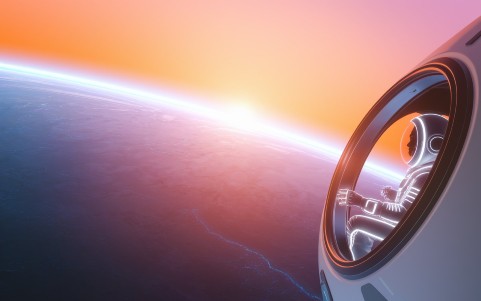Extremophiles thrive in harsh places where life should not exist. These tiny organisms may hold answers to alien survival. Scientists study them to understand how life could exist beyond Earth. The idea of life in extreme environments gives hope for alien survival on distant planets and moons.
What Are Extremophiles
Extremophiles are simple life forms that live in extreme heat or cold. They also thrive in acid or salty water. These organisms adapt well to places where most life dies. Their traits suggest that life beyond Earth may not need perfect conditions. That idea drives the study of alien survival and space biology.
Why Extremophiles Matter in Alien Research
Extremophiles can survive intense heat and high radiation. These same traits could help aliens survive on harsh planets. Their survival in extreme zones on Earth hints at possible life elsewhere. This makes extremophiles a key clue in the search for alien survival. Scientists study their genes to find links to life on other worlds.
Types of Extremophiles Found on Earth
Thermophiles live in boiling water near volcanic vents. Halophiles survive in salty lakes. Acidophiles live in acid pools. Each one adapts to what seems like a deadly place. Their survival proves that life can grow in ways we never expected. That gives hope for alien survival in extreme space zones.
Alien Survival and Extreme Heat
On Earth some bacteria live near volcanic heat vents. These vents mimic heat found on planets like Venus. If life can live near lava it might also live in alien volcano zones. Such microbes point to alien survival even under scorching heat. These bacteria inspire missions to hot planets and moons.
Cold Environments and Life Beyond Earth
Some microbes live inside Antarctic ice. They remain active and feed slowly. Similar ice covers Jupiter’s moon Europa. Scientists believe oceans lie below its ice crust. If microbes live in ice here they might live in Europa’s ocean. That supports the idea of alien survival in icy places.
Alien Survival in Salty Worlds
Earth has salt flats where halophiles grow. Mars shows signs of past salty water. If halophiles thrive in salt they might live or once lived on Mars. This links extremophiles to alien survival on dry salty planets. Space probes now search such spots for signs of microbial life.
Survival Without Sunlight
Some extremophiles survive in dark caves. They use chemicals not sunlight for energy. This process is called chemosynthesis. It could happen in alien caves or oceans. Planets or moons with no light might still hold life. That idea widens the scope of alien survival theories.
Radiation Resistance and Alien Survival
Deinococcus radiodurans is a microbe that survives high radiation. It thrives where nuclear waste exists. This makes it a top candidate in alien survival research. Planets with thin air get more space radiation. If aliens exist there they need traits like these microbes. So radiation-proof life is key in alien survival theory.
High Pressure Adaptation and Deep Space Life
The ocean floor has extreme pressure. Some microbes survive there without harm. Jupiter’s moon Europa has deep oceans under ice. Similar pressure might exist there. Earth microbes that live under pressure could help explain alien survival deep in space. These conditions make science rethink where life may exist.
Alien Survival and Acidic Conditions
Acidophiles live in acid-rich pools. These places kill most forms of life. Venus has acid clouds that could host similar life. If Earth microbes handle acid they hint at alien survival in Venus clouds. This supports the idea that even hostile planets could hide life forms.
Life in Alkaline Zones
Alkaliphiles live in soda lakes with high pH. Some lakes in Africa hold such life. This helps us study how life reacts to extreme bases. Some alien worlds may have alkaline oceans. If microbes live there it adds proof of possible alien survival.
Dry Environments and Alien Clues
Some extremophiles survive in dry deserts. They go dormant and revive with water. Mars has dry plains with signs of water flows. Earth microbes in dry zones hint at past or current alien survival on Mars. This directs scientists to test dry alien soil for life.
Extremophiles and Space Travel
Some extremophiles survive in space. They handle vacuum and radiation during lab tests. This supports theories about panspermia. Life may travel between planets on rocks. If so extremophiles could help explain alien survival beyond Earth. They may even be early forms of alien life in space.
Pros and Cons of Using Extremophiles to Study Alien Survival
| Pros | Cons |
|---|---|
| Thrive in harsh places | Lab results may not match alien worlds |
| Prove life can exist in odd zones | Not all microbes survive every condition |
| Help guide space missions | Need complex tests for proof |
| Boost hope of alien survival | Cannot show full alien ecosystems |
| Suggest alien life may be simple | Microbes do not equal full alien life |
Life in Subsurface Alien Worlds
Some extremophiles live deep below Earth’s crust. They use rock minerals for energy. This suggests life may hide below alien surfaces. Mars and Europa might hold subsurface life. These hidden zones offer clues about alien survival away from surface radiation and cold.
How Genetic Tools Reveal Alien Survival Clues
Scientists use DNA to study extremophiles. These genes show what helps them survive. Genetic traits may help find alien DNA. If alien life shares some traits it could point to shared survival skills. This method helps refine alien survival studies.
Alien Survival Linked to Earth’s Origins
Some extremophiles may be ancient life forms. They reflect early Earth conditions. Earth’s start may resemble alien planets today. That means life may form under rough alien climates. Extremophiles show how life can begin even with extreme weather or toxic air.
Earth’s Extreme Zones as Test Beds
Scientists simulate alien zones using Earth’s harsh places. Volcanoes ice fields and salt flats are useful test beds. They test machines and study microbes there. This helps plan missions to Mars Europa or Titan. Extremophiles guide these tests with clues about alien survival.
Life Beyond Carbon and Water
Most life on Earth needs carbon and water. But some microbes use sulfur or methane. Alien survival may not need Earth-like elements. If extremophiles live without oxygen alien life might do the same. This expands the type of planets we study.
How NASA Uses Extremophiles
NASA studies extremophiles to plan alien missions. Mars rovers test spots like dry salty zones. Europa missions aim to search under ice. NASA uses Earth microbes to set mission goals. This ensures better chances of finding signs of alien survival.
Could Aliens Look Like Earth Microbes
Alien life may be small and simple. Extremophiles suggest microbes are the most likely life form. These aliens may not look like humans. They may be tiny organisms with tough skins. Their traits may match Earth microbes that survive extreme heat cold or acid.
Future Research on Alien Survival
More missions will collect space soil and ice. Scientists will look for microbe-like cells. DNA scans and microscopes will aid this work. Extremophiles will guide these steps. Their survival skills hint at how aliens could live in deep space or on alien planets.
Final Thoughts
Extremophiles show how life survives the impossible. They hint at alien survival in the universe. These tiny Earth microbes reshape our search for life. They help science imagine how aliens might live on Mars Europa or even Venus. Life does not need comfort. It only needs a way to adapt.
FAQs
1. What are extremophiles?
Extremophiles are microbes that survive in extreme heat cold acid or salt. They help us understand alien survival.
2. Can extremophiles live in space?
Some extremophiles survive vacuum and radiation in labs. This suggests they could survive short space trips.
3. How do extremophiles help search for aliens?
They show where life can survive. Their traits guide missions to Mars Europa and other alien worlds.
4. Could alien life be like Earth microbes?
Yes. Alien life may be small and simple like Earth’s extremophiles. They may use odd chemicals to survive.
5. Where do scientists test alien theories?
They use Earth’s volcanoes deserts ice fields and salt lakes. These places mimic alien zones.





